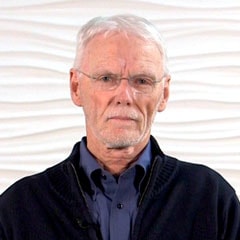Clinical Swallow Examination: Assessing More Than Biomechanics
May 12, 2016
4 min. read

Consider the following case: an outpatient is experiencing swallowing difficulties with no clear medical diagnosis. Even the best instrumental study of swallowing has failed to provide a satisfactory physiological basis for the patients impairment. While the data and interpretation of the videofluoroscopic swallow study (VFSS) may be accurate, it only describes the biomechanical failure in the swallowing mechanism. Only a comprehensive clinical examination, including a subjective description of the problem, a thorough history, and a complete physical inspection can provide the data necessary to explain the nature of the impairment.
Meet Our Patient
Mr. N arrived at the Neuro Speech & Swallow Clinic with his VFSS report, which indicated mild swallowing difficulties, most likely related to his recent dental procedure and aging. The patients swallow was described as having:
Good airway protection with no evidence of penetration or aspiration
Poor tongue retraction with premature spillage of liquid into the pharyngeal cavity
Based on the modified barium swallow study (MBS), it was recommended to the patient that he thicken liquids and perform a series of exercises using a spoon to strengthen the tongue.
The patients' wife told us that she had previously sought medical assistance for her husband because his swallowing was becoming increasingly problematic. Mr. N was 75 years old and by allreports had always been healthy. He had no diagnosed neurological or medical condition and took nomedications.
His wife commented that he had several teeth removed 6-months prior to the onset of the swallowing problem and she noted that this seemed to make him talk slower. Since his last clinic visit, Mr. N had been following his clinician's recommendations, but he wasn't improving and generally felt sapped of all energy. He had also lost 10 pounds over the last 4-months.
Clinical Swallow Examination
Our comprehensive clinical examination detected many pertinent findings, but the most relevant and compelling observations included:
General appearance of mild lethargy, skin tenting, dry eyes
Impaired speech characterized by slow, imprecise articulation; mildly increased nasality; slightly strained vocal quality; and overall mild-moderate reduced intelligibility
Examination of oral/facial structures and function significant for thickened secretions, lingual fasciculations with probable atrophy, hyperactive gag reflex but unsustained velar elevation on prolonged phonation
Forced vital capacity (measured with a hand-held respirometer) was 50% of what is expected for a man of his age and height
Examination Findings and Referral
All data from the comprehensive clinical examination pointed to progressive dysarthria and dysphagia with indications of both upper and lower motor neuron involvement. Also, there were clinical signs of incipient dehydration.
Appointments were made at both neurology and pulmonary clinics. A clinical dietitian developed a plan to increase fluid and caloric intake. The patient was advised to modify his lingual exercises emphasizing range of motion over strengthening. Mr. N returned to our clinic 2 weeks later and reported that his symptoms of dysarthria and dysphagia were unchanged, but he was feeling much more energetic. After visits to the Neurology Clinic our patient was diagnosed with amyotrophic lateral sclerosis (ALS).
Conclusion
All too often patients with swallowing complaints are assessed primarily through instrumental assessments, without the benefit of a detailed clinical examination. While instrumental examinations such as a VFSS are the best means of assessing the biomechanics of the swallowing mechanism, they can be ineffective in describing the underlying neurophysiologic basis for dysphagia.
In the case above, skilled clinicians obtained relevant data from the patients' subjective history and noted objective findings from a thorough physical inspection. Using skills developed through mentoring and experience, the clinicians analyzed the relevant data and recognized patterns of pathology. The resulting recommendations were consistent with the patients' underlying neurophysiologic pathology and the nature of his degenerative disease.
Below, watch a patient education video explaining a normal swallow from the MedBridge Patient Education Library. To better educate and engage your patients during their treatment, access animated 3D-videos and handouts, along with dysphagia activities and maneuvers.







